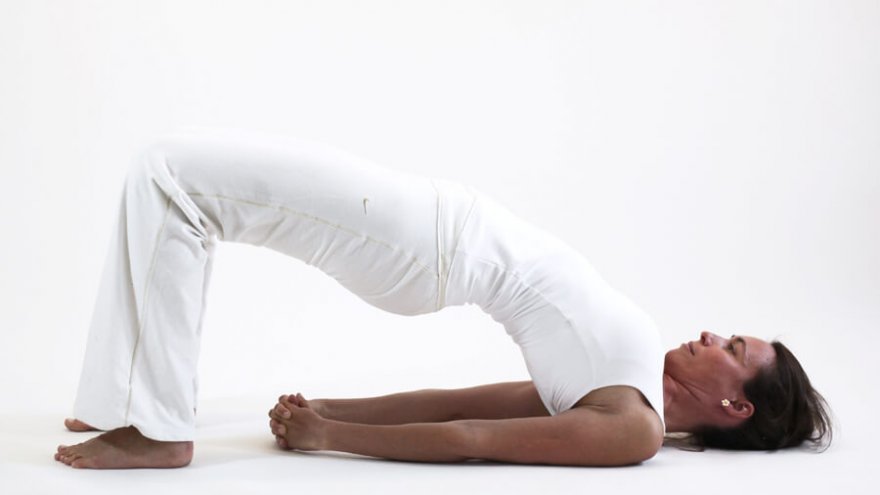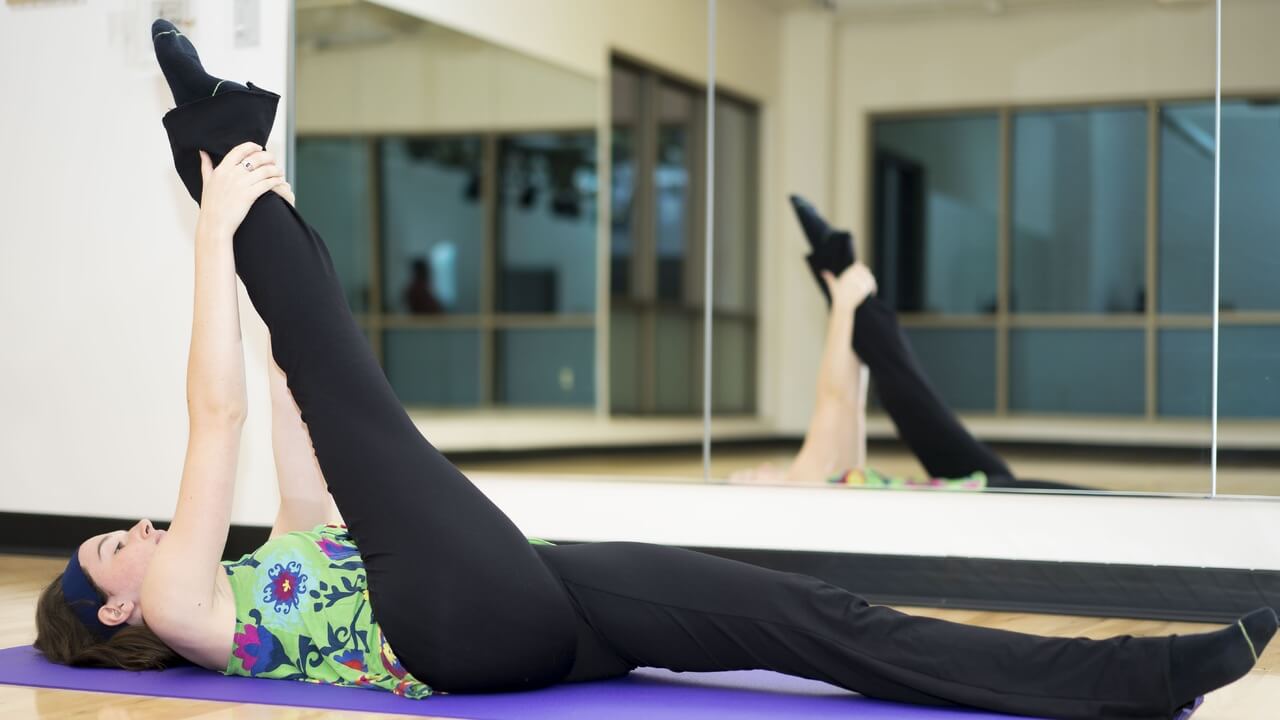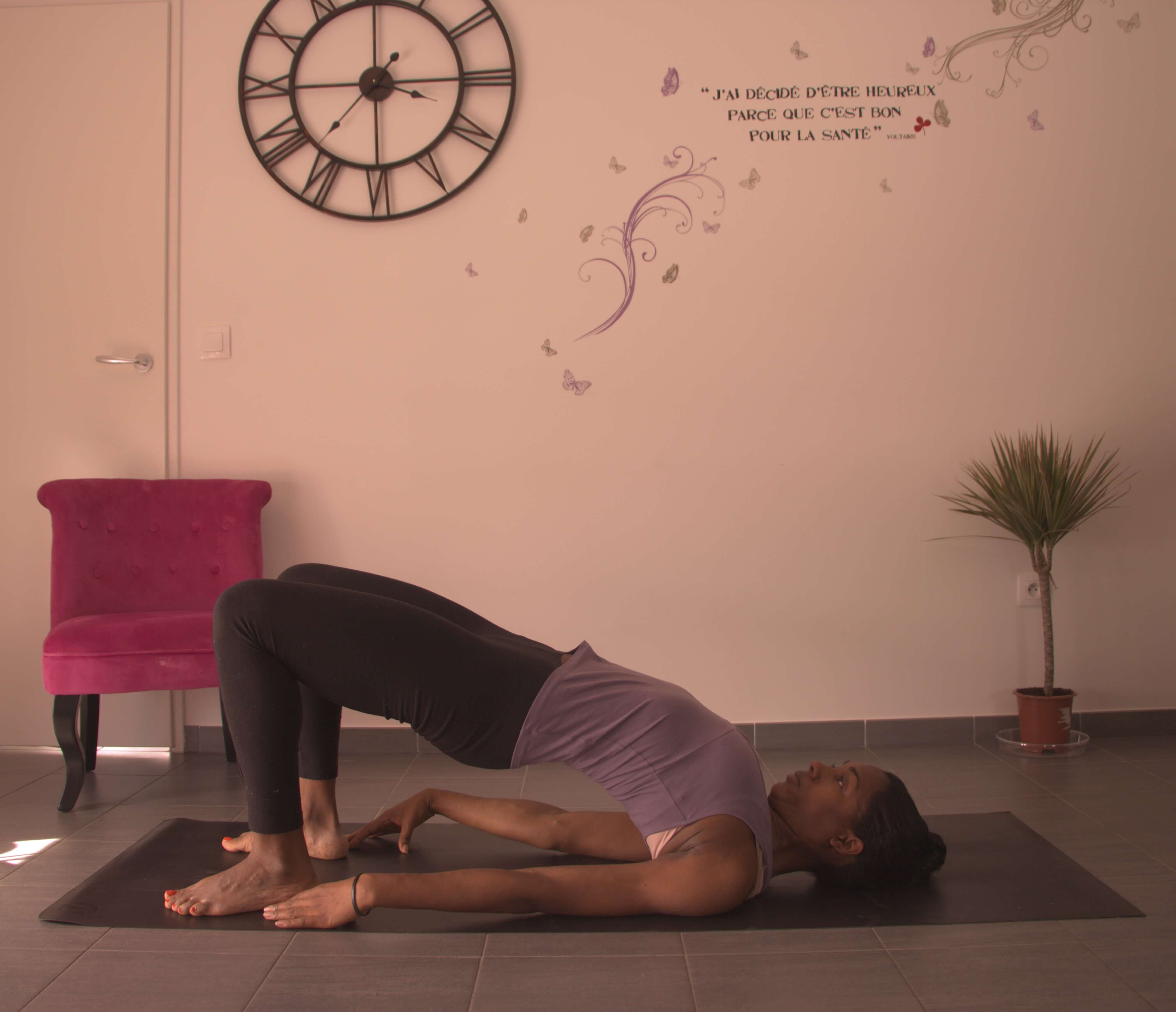Pilates Moves for Runners

It’s well known that incorporating a variety of training methods into your fitness regimen can make you a better runner. High-intensity interval training, strength training, swimming, biking, yoga, and Pilates all can benefit your running program.
For those who are interested in supplementing their running with another form of exercising, Pilates, which focuses predominantly on core muscles, can be a good choice.
What is Pilates?
The Pilates method was named for its founder, Joseph Pilates, who developed the exercises in the 1920s. Based on yoga, Zen and ancient Greek and Roman exercise regimens, Pilates took 20 years or so to develop his methods. The exercises employ low-impact flexibility and muscular strength and endurance moves that emphasize proper posture, core strength, and stability and muscle balance, all things that are important to efficient running economy. The exercises are known today as “matwork,” but Pilates dubbed them “contrology,” meaning “the science of control.” In addition to the actual movements, deep, healthy breathing, in which the focus is pulling the navel in toward the spine, is another hallmark of the Pilates method. The focus on mindful inhalation and exhalation can increase lung capacity and blood circulation.

Although Pilates instruction is offered in many gyms and fitness centers—sometimes using a piece of equipment called a Reformer—you really need nothing more than a mat to do most Pilates exercises.
If you are new to Pilates, you might benefit from beginning the regimen under the supervision of a Pilates instructor who can ensure that you are doing each movement correctly and with proper form. If you have unstable blood pressure, a risk of blood clots, a herniated disk, or severe osteoporosis, Pilates might not be a good option or the moves may need to be modified by an instructor to accommodate for your condition.
The Moves
After surveying seven online lists of the best Pilates moves for runners, the following 10 moves are the most common to all of the lists. If you search for Pilates exercises online, you will find that some of the movements are the same but their names vary from site to site. Others have names that are the same across-the-board.
Standing Roll-Down
Stand with feet hip-width apart and a neutral spine (butt tucked under so there isn’t an overarching in the lower back). Slightly bend your knees and engage your core. Inhale deeply and as you exhale, bring your chin to your chest and roll down toward the floor, leading with your head. Stop and hold for a few seconds when you feel a stretch in your back and hamstrings and extend your hands to the floor. As you are holding, inhale and as you exhale, roll your body back up to standing, slowly, one vertebra at a time. Repeat three times.
The Hundred
To start, lie down comfortably on your back. Then, focus on bending your knees and placing your feet so they are flat on the surface of the floor. Ensure that your arms a gently placed at your sides and your hands are gently rested flat on the surface. Tighten your core and inhale. As you exhale, bring your head and shoulders gently above the surface of the floor as if you were going to do a crunch. Hold in that position while you bring your straightened arms off the floor, level with your hips. Inhale as you keep your arms straight and pump them up and down toward the ceiling and then toward the floor for five counts. Exhale as you pump them for another five counts. Alternate inhaling and exhaling while holding in the crunch position and pumping your arms for five counts until you reach 20 counts. Gradually work up to 100 counts.
Scissors
To begin, position your back on the ground. Curl your head and neck up so that your shoulders are no longer on the floor. Engage your core and press the lower back flat against the floor. Lift one leg an inch above the mat and hold while bringing the opposite leg toward your head, bringing both hands to the ankle. Double pull this leg and switch with the leg hovering off the floor. Do 10 reps per leg.
The Saw
Begin by lying on your back, arms flat on the ground, outstretched above your head and legs flat on the ground, apart as far as is comfortable. Inhale deeply and while exhaling, roll up, twisting your torso so that your right-hand reaches toward your left foot. Stretch your left arm out behind you. Hold for a few seconds and then straighten your torso so you are facing in between your legs and outstretch your arms in front of you. Inhale and then exhale as you return to the starting position. Inhale again and as you exhale, roll up, twisting your torso so that your left-hand reaches toward your right foot. Repeat the movement, alternating between sides for 10 reps
.
Glute bridge/glute bridge with leg extension
Lie flat on your back, knees bent, feet flat on the floor about hip-width apart and heels a few inches away from your butt. Squeeze your glutes, engage your core and inhale. As you breathe out, curl your hips up and lift them toward the ceiling. Hold for a few seconds and then exhaling, lower your spine back to the starting position. For a variation that is a little more difficult, when you are holding in the bridge position, extend one leg up with toe pointed and hold for a second before returning it to the floor. Repeat with the opposite leg. Do either option for 10 reps.
Side leg lifts
Lie on one side, legs stacked one on top of the other. Engage your core muscles and lift your top leg toward the ceiling as far as is comfortable, maintaining your pelvis in a stable position. Slowly lower leg to starting position. Do 15 reps and switch to the other side.
Swan
Lie flat on your stomach, arms bent, hands flat on the floor, in front of your shoulders, legs hip-width apart. Engage your core, lift your torso and your hands simultaneously and hold for a few seconds before lowering back to the mat. Complete 10 reps.
Swimmers
Lie flat on your stomach with arms extended in front of you. Engage your core, pulling your abdominal muscles off the floor. Inhale and then while exhaling, raise your legs and arms simultaneously, keeping them parallel to the floor. Lift your head and maintain alignment with the spine. Inhale for five counts while pulsing your opposite legs and arms as if in a swimming motion. Exhale for five counts, still pulsing/paddling your arms and legs. Ten paddles are one set. Work up to four sets of 10 paddles.
Back extension
Lie flat on your stomach, arms outstretched above your head. Inhale. Exhale and raise both legs and both arms simultaneously. Hold for five seconds while breathing normally. Do five reps.
Torso Twist
Lie down flat, legs extended straight above the hips, arms extended out to either side. Try to keep legs as straight as possible. Keeping your legs together, lower them to one side as low as possible while keeping the lower part of your back flat against the floor. Return legs to starting position and lower to the opposite side. Start by doing 10 reps total and gradually work up to 20 reps.

If you aren’t opting for a class with a certified Pilates instructor, it might be beneficial to find an online video that demonstrates each move because minor instructional tweaks often are lost in translation to the written word. It is important to note that the sequence of inhalations and exhalations are important to the practice of Pilates and an instructor or instructional video will offer you a better understanding of the breathing techniques used in conjunction with the movements.
Sources
- , Use These Pilates Moves to Build a Stronger Core, web site
- , 13 Pilates Moves for Runners, web site
- , 4 Pilates Moves For Runners That You Can Do Anywhere, web site
- , Pilates Exercise for Better Running Posture, web site
- , 7 Pilates Moves That Will Strengthen Your Running Performance, web site
Latest Articles
 Is Running on a Treadmill Easier Than Running Outside?Runners have their own preferences, whether it is treadmill running, running outside on the road, or exploring trails. So...
Is Running on a Treadmill Easier Than Running Outside?Runners have their own preferences, whether it is treadmill running, running outside on the road, or exploring trails. So... Is It OK to Use Trail Running Shoes on the Road?While trail running shoes can be used on roads, especially in situations where a runner encounters mixed terrains or pref...
Is It OK to Use Trail Running Shoes on the Road?While trail running shoes can be used on roads, especially in situations where a runner encounters mixed terrains or pref... How to Fix Sore Quads After Running?Rest, ice, gentle stretching, and over-the-counter pain relievers can help soothe sore quads after running. Also, ensure ...
How to Fix Sore Quads After Running?Rest, ice, gentle stretching, and over-the-counter pain relievers can help soothe sore quads after running. Also, ensure ... 10 Fruits With The Most Electrolytes to Replace Sports DrinksThese fruits are high in electrolytes such as potassium, magnesium, and calcium, essential for hydration, muscle function...
10 Fruits With The Most Electrolytes to Replace Sports DrinksThese fruits are high in electrolytes such as potassium, magnesium, and calcium, essential for hydration, muscle function...

